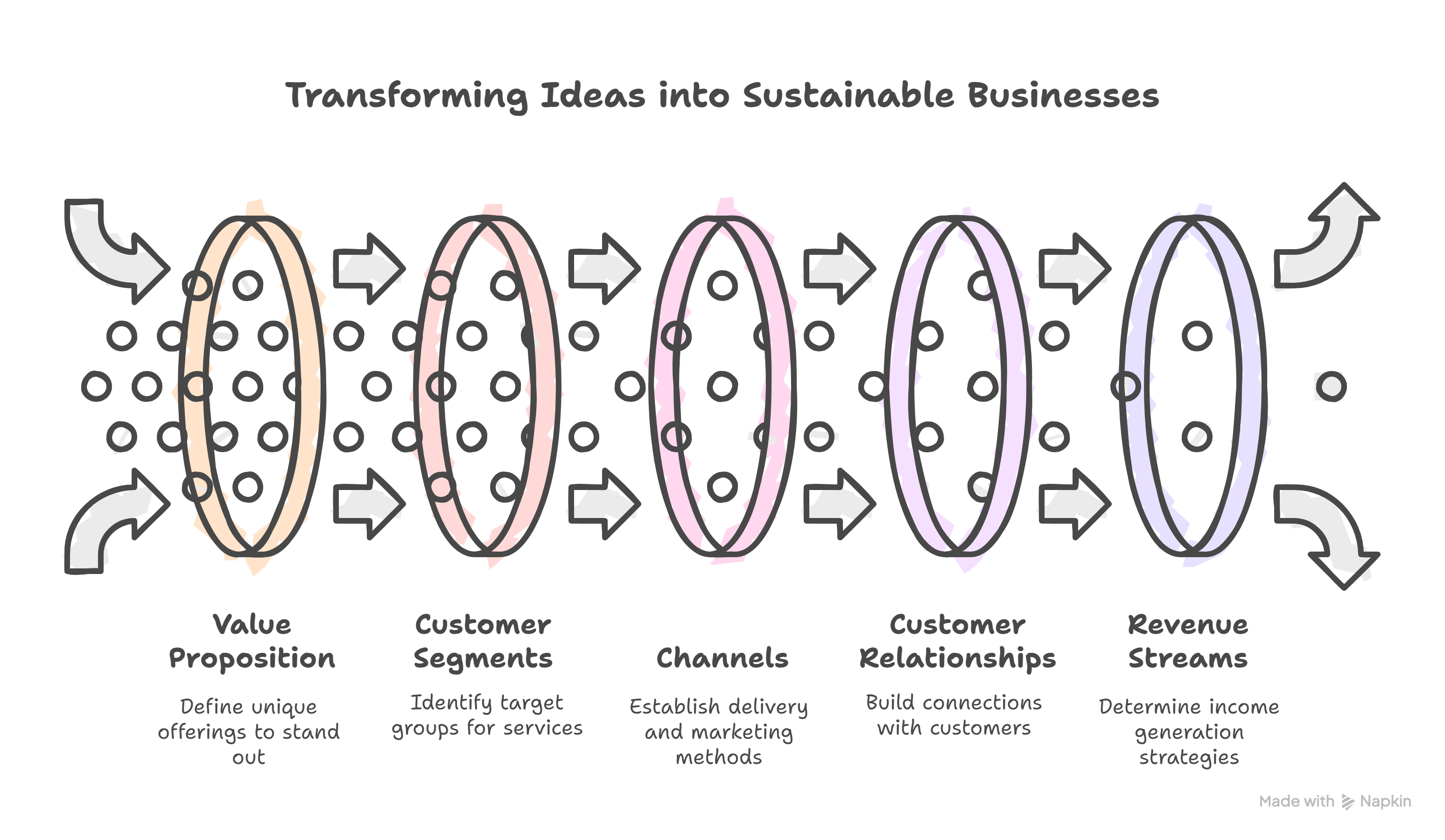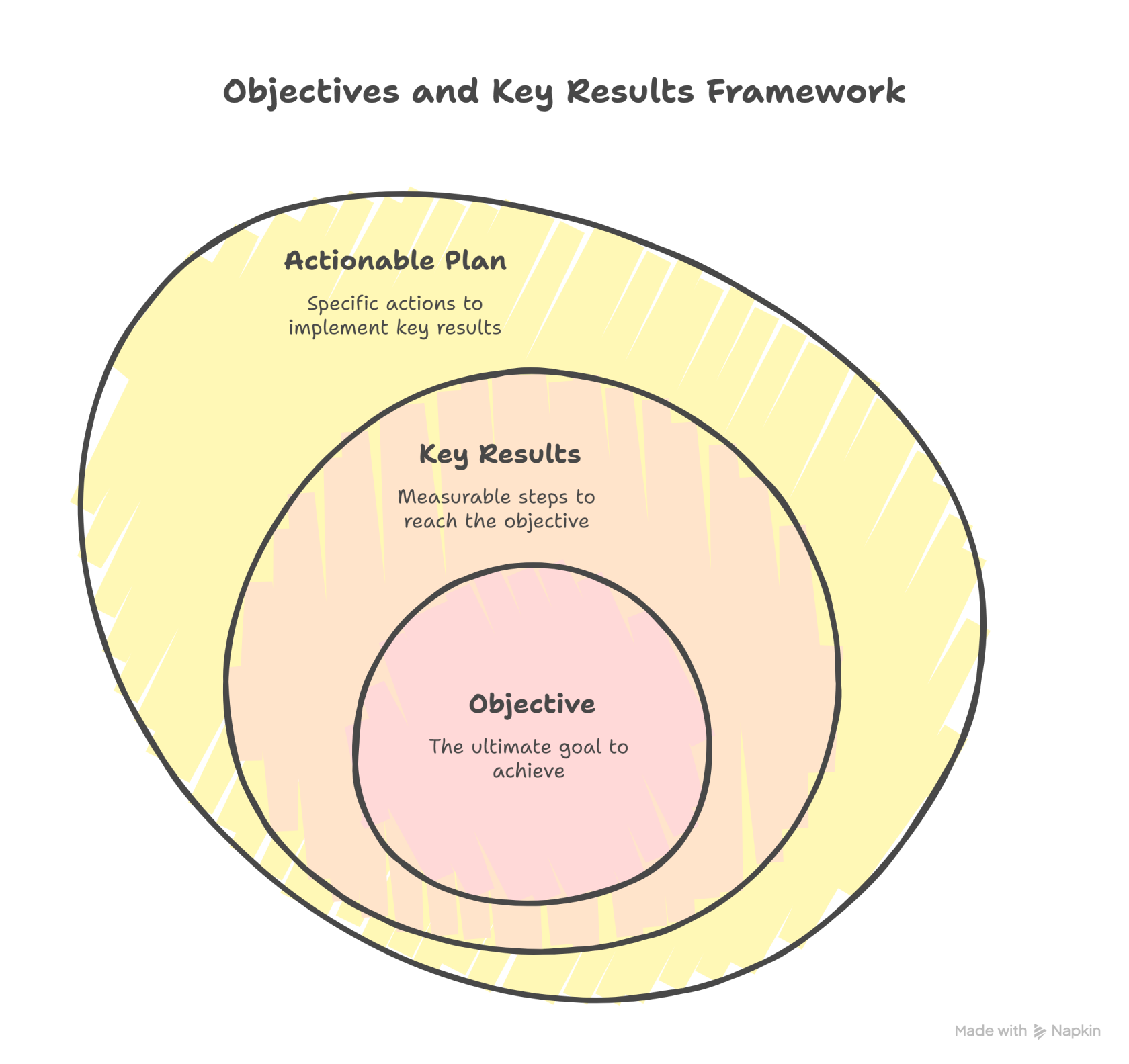Models of Scaling
The final stage of the design thinking process is Scale. This is a crucial step that is often overlooked in traditional models, which tend to stop at prototyping. Scaling involves transforming a validated idea into a sustainable and measurable business. Two key frameworks for this stage are the Business Model Canvas and Objectives and Key Results (OKR).
1. The Business Model Canvas
The Business Model Canvas, developed by Alexander Osterwalder, is a strategic tool that helps visualize an idea as a complete business. It forces a person to think through all the components of a business holistically, from value creation to value appropriation.
The canvas is typically divided into nine sections:
- Value Proposition: The unique product or service you offer to the market. This is the core of the business and must constantly evolve to stay ahead of competition.
- Customer Segments: The specific groups of people or organizations you aim to serve.
- Channels: How you deliver your value proposition to customers, including marketing and sales channels.
- Customer Relationships: The type of relationship you establish with your customer segments.
- Revenue Streams: How the business makes money, such as through sales, licensing, or subscriptions.
- Key Activities: The most important actions a company must take to operate successfully.
- Key Resources: The essential assets required to offer the value proposition, such as human resources, physical assets, or intellectual property.
- Key Partnerships: The network of suppliers and partners that help the business function.
- Cost Structure: All the costs incurred to operate the business model.
By filling out the Business Model Canvas, you can get a clear, comprehensive view of your idea as a viable business, identifying potential gaps and opportunities that might have been missed in the earlier stages.
2. Objectives and Key Results (OKR)
OKR is a management framework used to define and track objectives and their outcomes. It provides a disciplined and systematic way to measure progress toward a goal, a principle famously summarized by Peter Drucker: "Whatever cannot be measured cannot be managed."
- Objective (O): This is the "What" you want to achieve. It should be aspirational and qualitative. For example, "shed 5 kgs in the next one month and maintain this loss for the next one year."
- Key Results (KRs): These are the "How" you will measure your progress. They must be specific, measurable, and time-bound. For the weight loss objective, key results could be: "I'll have small diets five times a day. I'll avoid any greasy items for the next one month. I'll be walking 10,000 steps every day."
OKR transforms an ambition into an actionable plan by linking aspirational goals with concrete, measurable results. This is crucial for scaling a design thinking idea, as it provides a clear roadmap for execution and a way to continuously track performance.



No Comments